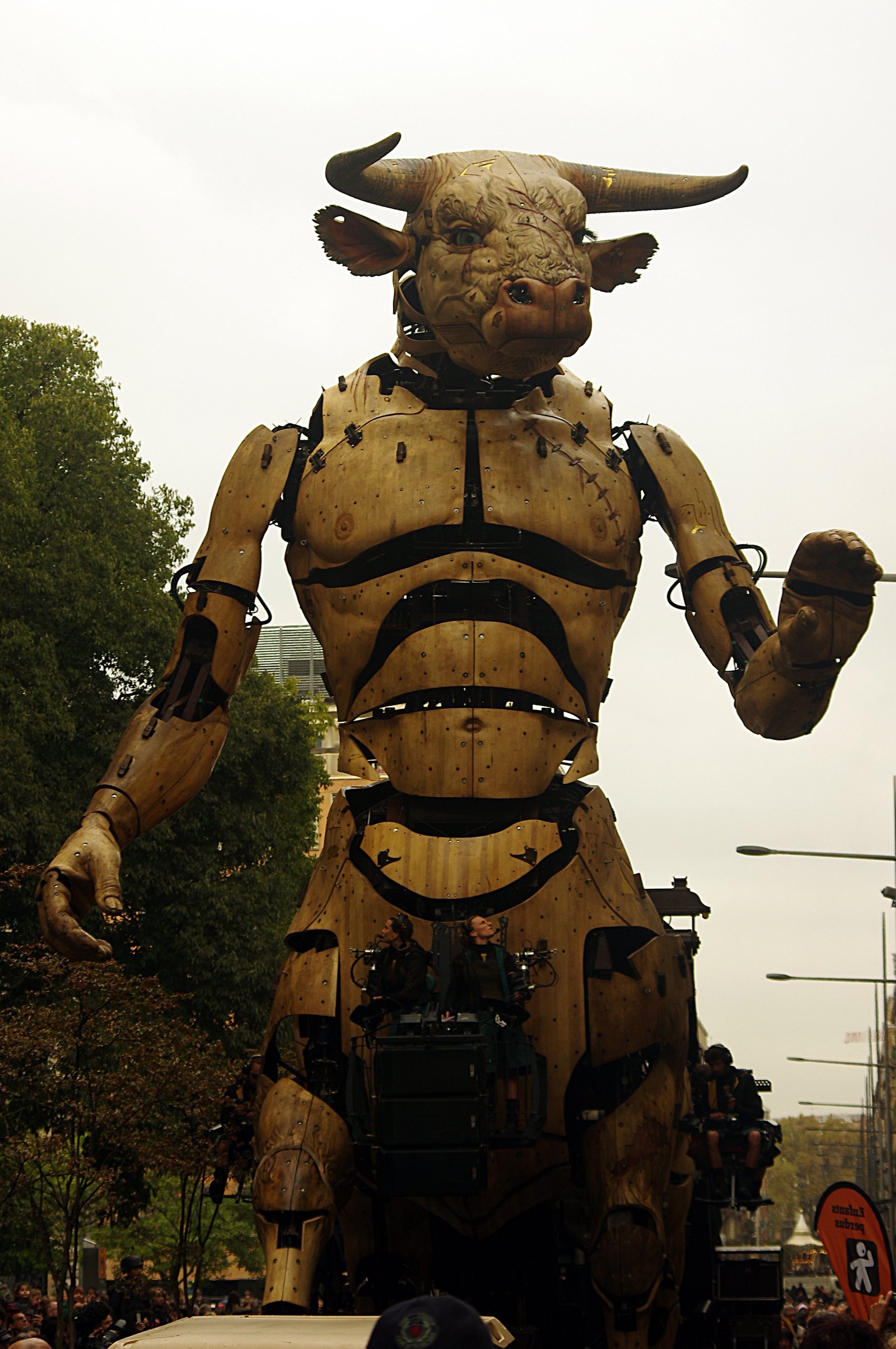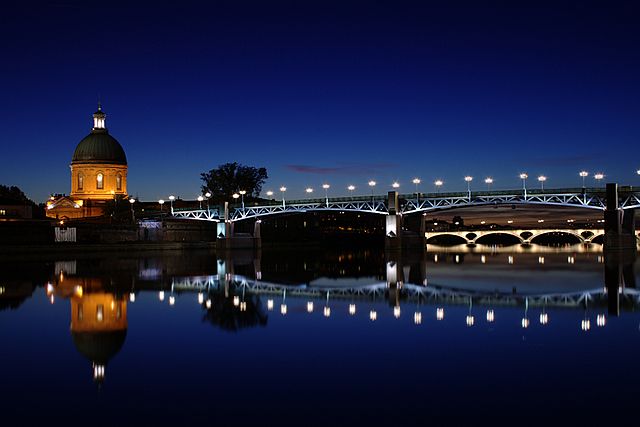useR! 2019
Toulouse - France
 useR! 2019 in Toulouse
useR! 2019 in Toulouse
useR! 2019 will be held in Toulouse, France on July 9-12, 2019.
We are delighted to welcome useR! 2019 and hope that you will enjoy the conference and our city!
Toulouse is the capital of one of the largest regions of France, the “Occitanie”. The region is nested between the Mediterranean Sea, the Atlantic Ocean, bordered in the south by the Pyrenees mountains and Spain. The region is famous for its typical South of France weather all year long.
Toulouse is now one of Europe’s high-tech cities with a large number of cutting-edge businesses in the aerospace, IT and spatial industries. It has numerous research institutes (10,000 researchers, 3 universities, 4 schools of engineering and 14 higher education schools) and with more than 100,000 students has the 3rd largest campus in France. The first university was created in 1229 and is the 3rd oldest in France.
Toulouse is also the European capital of the space industry and a renowned world centre for aeronautics. It is also the first city in France in the embedded electronic systems industry and has three international clusters for competitiveness (aerospace, cancer and agriculture).
Toulouse is undergoing rapid demographic expansion, the fastest-growing in France, and even in Europe. It is considered as one of the largest intermediate European cities.
Finally, Toulouse is a colourful city often named “la ville rose” (the pink city). It has adopted from Spain a taste for long “aperitifs” with “tapas” on terraces, convivial meals and its frequent music and arts festivals. Lovers of good food will enjoy savouring local products and the city’s culinary specialties: Toulouse sausage, violet-flavoured sweets, wines, the famous “cassoulet”, the “Fénétra” cake... Visitors can enjoy a relaxed stroll or bike ride through the narrow historic centre or near the banks of river Garonne. Toulouse was the favourite city of Antoine de Saint-Exupéry, the author of “The Little Prince” and an airmail pilot pioneer. Today, you can sleep in his room, #32, at the Hotel Le Grand Balcon.
Sights and monuments
Ideally located at the heart of Southwestern France, between the Mediterranean Sea and the Atlantic Ocean, the pink city with its unique history features a joyful combination of heritage and “art de vivre”. You can wander along the river Garonne or on the banks of the Canal du Midi - listed as a UNESCO World Heritage -, or visit the Saint-Sernin Basilica, located on the St Jacques de Compostelle pilgrimage itinerary (Pilgrimage of Compostela) or visit the Natural History Museum, discover the Capitole Place, and enjoy some of the 30 markets, the six Michelin stars restaurants.
So your stay in Toulouse will be a great moment of pleasure!
Place du Capitole
Located at the heart of the city, this place is also the city town hall (Hôtel de Ville), and the Opera House. This building is remarkable with its 8 columns of pink marble on the façade, the Henry IV courtyard - the place where the Duke of Montmorency was killed - and the “Salle des Illustres”. This long and beautiful room was inspired by the Farnese Gallery in Rome where the golden mouldings compete with the beauty of the paintings in the cartouches. Also see the rooms Jean-Paul Laurens, Henri Martin, Paul Gervais... These historical rooms are open to the public the first Sunday of each month.

Photo Ignis.
Banks of the Garonne River
If you have time for a stroll, you should go from St Pierre’s Place, the famous student spot where you can take a budget-friendly drink, to the “Pont neuf” bridge, Toulouse oldest bridge. On your way along the Garonne River you walk past The Notre Dame de la Daurade basilica with its black virgin dressed by fashion designers. You will also notice the Arts Academy with its monumental façade before ending up at The Pont Neuf built in 1632.
L’Hotel d’Assézat
It’s a magnificent 18th-century town mansion built by Nicolas Bachelier for Pierre d’Assézat who made his fortune from woad, a plant used in dyeing. The building houses the Fondation Bemberg, a private museum with a very interesting permanent collection of paintings, bronzes and art objects.
Jacobins‘ Cloisters
Unique in Toulouse, this building, entirely made of bricks, contrasts its massive or even austere aspect from the outside and the extraordinary lightness of the interior architecture with famous palm-tree ribs thrust upwards. There is also the cloister, the sacristy, the chapter house and a chapel dedicated to Saint Antonin decorated with a set of mural paintings from the 14th century.
The St Etienne Cathedral
A disconcerting church because its building was spread over 5 centuries, from the 13th century to the 16th century, during which the architectural concepts went through significant transformations. Entrance to the cathedral is via the nave called Raymondine, of a southern gothic style with its single wide nave. The second part of the building, made up of a vast choir, was built in a Northern gothic style in order to rival other great cathedrals. It contains some interesting ornamental elements: stained glass windows, tapestries, paintings, a large rose window, a magnificent large organ suspended 17 metres up and 17 chapels.
The Victor Hugo Merket
Close to the Jean Jaurès subway station, this market is the home to famous traders who have handmade local food. Not expensive, it is the best place to buy the city's gastronomic specialties including the Saucisses de Toulouse (a type of sausage), cassoulet Toulousain (a bean and pork stew) and garbure (a cabbage soup with poultry). Also, foie gras, is a delicacy mainly made in the Region. On the first floor, you’ll find budget-friendly restaurants open for lunch and offering great and fresh local dishes. Open every morning of the week - closed on Mondays.
Saint Sernin Basilica
A masterpiece of Roman art, the Saint-Sernin basilica has had significant renovation work done over the past 30 years : recovery of the bell tower, extrication of the mural paintings of the 12th century, revival of the alter from 1096, the crypts and the displays of the treasure trove (with its exceptional works). It’s an important pilgrimage stop on St Jacques de Compostelle pilgrimage itinerary (Pilgrimage of Compostela). The treasure trove of the basilica is located in the ambulatory and in the crypts of the building.
Le Canal du Midi
In 1681 after 15 years of work the Canal du Midi was inaugurated, linking the town of Sète to Toulouse. It has been conceived, realized and supervised by Pierre-Paul Riquet (buried in St Etienne Cathedral).In 1996 the UNESCO committee endorsed the inscription of the Canal du Midi in the World Heritage list as an exceptional example of a designed landscape.

The banks of the canal offers plenty of natural areas that are ideal for relaxing, walking or playing sport. You just have to go to the rail station and follow the path.
The Old City Center
The old city centre is pedestrian friendly and you will find everything you need within walking distance. The city is on the site of an ancient Roman settlement, even today many of the smaller streets follow their Roman counterparts and many of the red-brick buildings are of a pseudo-Roman style. These buildings are also what gives Toulouse its nickname la ville rose (The pink city). Between The Capitole Place, Esquirol station and St Etienne Cathedral you just have to explore and enjoy!
Museums
La Machine
La Machine is a street theatre company founded in 1999 and led by François Delarozière. It came about thanks to artists, technicians and theatre designers working together for the construction of unusual theatre objects. The work that they develop in public spaces relates, in the first instance, to theatre, urban planning and architecture. Giant machines are visible at their museum called Halle de la machine.

Photo Mrniko.
La Cité de l'espace
The Cité de l'espace is a theme park focused on space and the conquest of space. It was opened in June 1997 and is located on the eastern outskirts of Toulouse. As of 2012, there had been more than 4 million visitors. One can visit full-scale models of the Ariane 5 rocket (55 metres or 180 feet), Mir space station, and Soyuz modules. The original planetarium has 140 seats and presents shows throughout the day. Cité de l'Espace also has numerous exhibits, often interactive; for example, a mock-up of a control room near the model of Ariane 5, allows visitors to prepare the launching of a rocket, help with its flight and then place a satellite in orbit. The gala dinner of the useR! 2019 conference will take place at the Cité de l'espace (more informations here).
Musée Aeroscopia
The Musée Aeroscopia is an important historical resource forging strong links between the past, present and future of the aviation world, aeroscopia’s aim is not only to preserve and optimise the presentation of unique items provided by local heritage organisations and Airbus Operations SAS, but also to pass on aeronautical culture – a fundamental building block in the construction of the region’s identity.

Photo Joris Egger.



